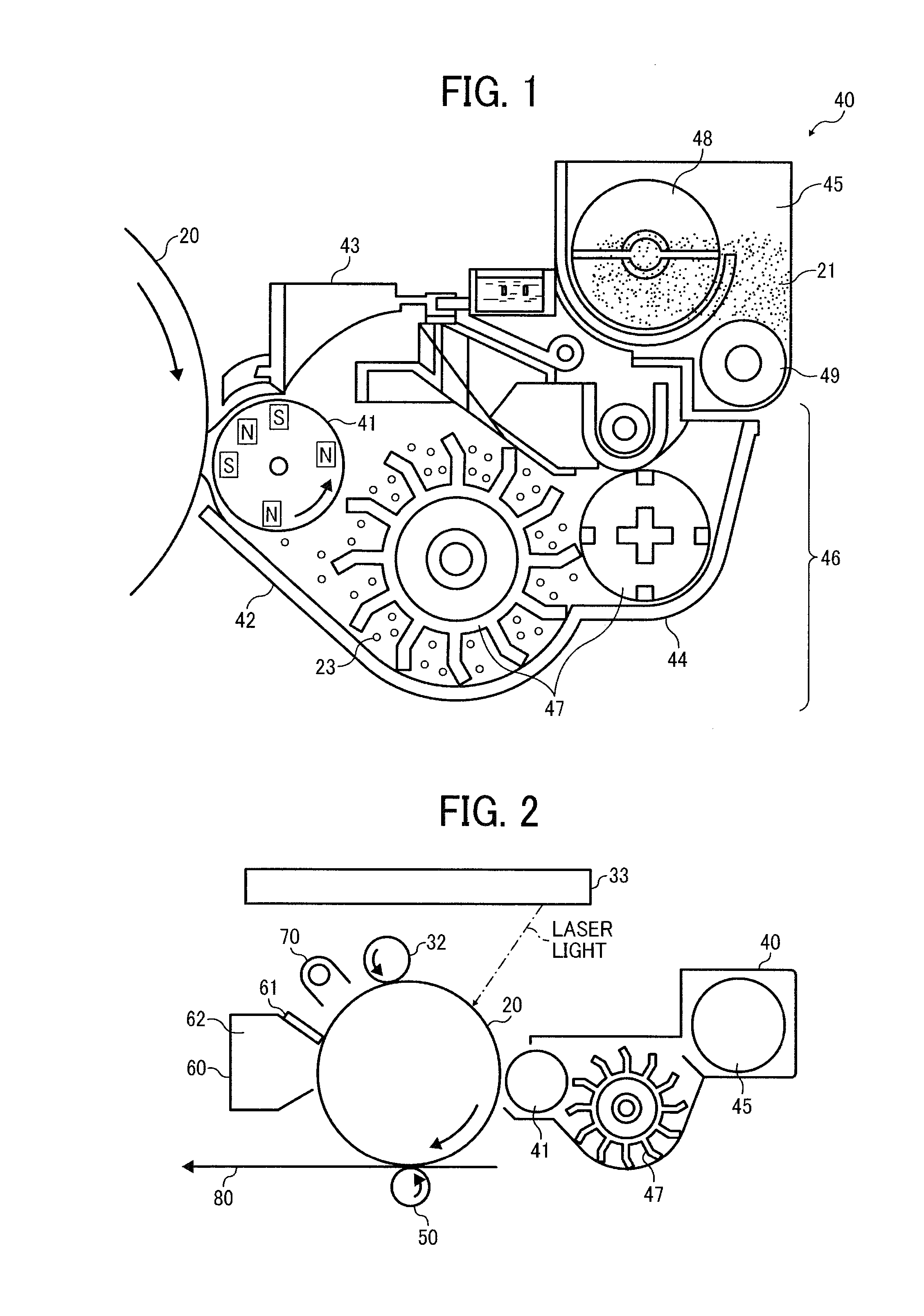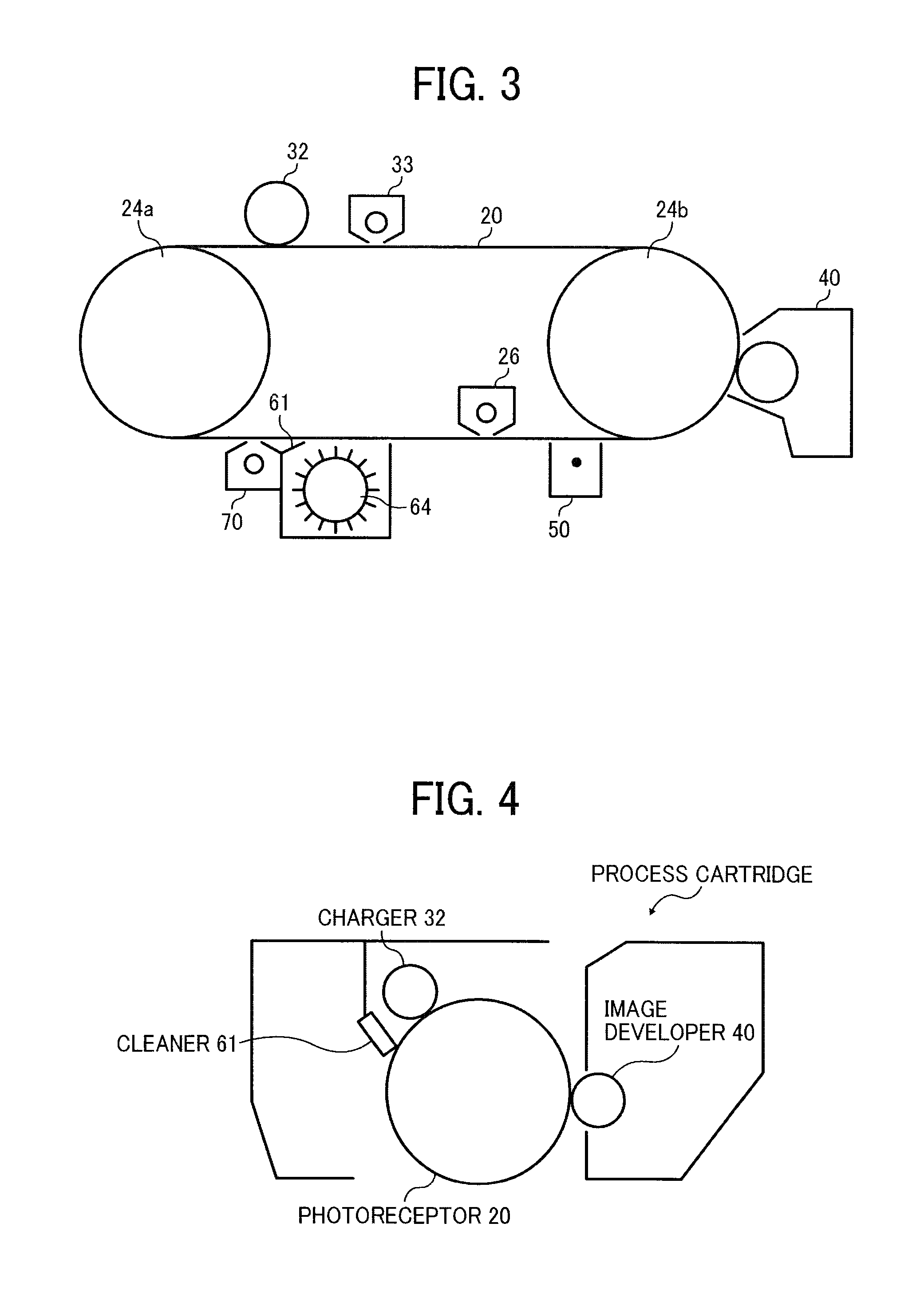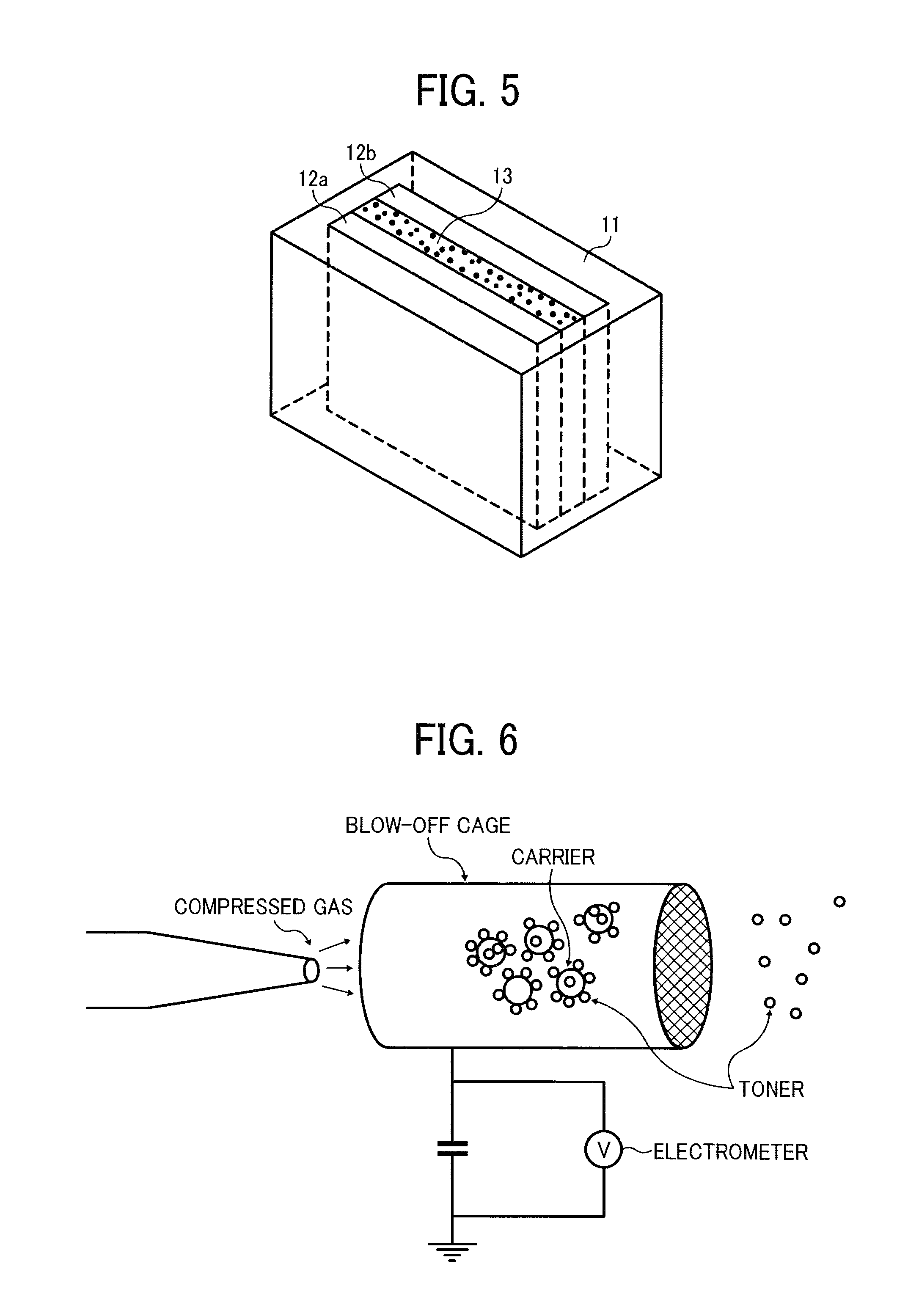Carrier for two-component developer, electrostatic latent image developer, and image forming method
a carrier and developer technology, applied in the field of carrier for two components, electrostatic latent image developer, image forming method, can solve the problems of ghost phenomenon, low density, difficulty in uniform amount, etc., and achieve good color reproducibility, good hardness and durability, stable chargeability
- Summary
- Abstract
- Description
- Claims
- Application Information
AI Technical Summary
Benefits of technology
Problems solved by technology
Method used
Image
Examples
synthesis example 1
Resin Synthesis Example 1
[0199]Three hundred (300) g of toluene were placed in a flask including a stirrer, and heated to have a temperature of 90° C. under nitrogen stream. Next, a mixture of 84.4 g (200 mmol) of 3-methacryloxypropyltris(trimethylsiloxy)silane having a formula of CH2═CMe-COO—C3H6—Si(OSiMe3)3 (Me is a methyl group) Silaplane TM-0701T (manufactured by Chisso Corporation), 39 g (150 mmol) of 3-methacryloxypropyltrimethoxysilane, 65.0 g (650 mmol) of methylmethacrylate and 0.58 g (3 mmol) of 2,2′-azobis-2-methylbutyronitrile was dropped therein for 1 hour. Further, a solution in which 0.06 g (0.3 mmol) of 2,2′-azobis-2-methylbutyronitrile was dissolved in 15 g of toluene was added (total 0.64 g=3.3 mmol of, 2′-azobis-2-methylbutyronitrile), then, mixed at 90 to 100° C. for 3 hours such that radical copolymerization is performed to prepare a [methacrylic copolymer].
[0200]The methacrylic copolymer had a weight-average molecular weight of 33,000. A solution of the methacr...
preparation example 1
Carrier Preparation Example 1
[0201]One hundred and eight (108) parts of methyl silicone resin (silicone resin having a silanol group and / or a hydrolyzable functional group) formed from a di- or trifunctional monomer having a weight-average molecular weight of 15,000 and a solid content of 25%, 27 parts of the [methacrylic copolymer] prepared in Resin Synthesis Example 1 (solid content of 25%), 20 parts of the [electroconductive particulate material 1], 7 parts of TC-750 from Matsumoto Fine Chemical Co., Ltd. that is titanium diisopropoxybis(ethyl acetoacetate) as a catalyst, and 1 part of a silane coupling agent SH6020 from Dow Corning Toray Silicone Co., Ltd. were diluted in toluene to prepare a [resin solution 1] including a solid content of 10% by weight.
[0202]The [resin solution 1] was coated on 1000 parts of the [spherical ferrite core material 1] using a fluidized-bed coater while the fluid tank had an inner temperature of 70° C., and dried to prepare a carrier. The carrier wa...
preparation example 2
Carrier Preparation Example 2
[0204]Thirty (30) parts of methyl silicone resin formed from a di- or trifunctional monomer having a weight-average molecular weight of 15,000 and a solid content of 25%, 10 parts of the [methacrylic copolymer] prepared in Resin Synthesis Example 1 (solid content of 25%), 30 parts of the [electroconductive particulate material 2], 2 parts of TC-750 from Matsumoto Fine Chemical Co., Ltd. that is titanium diisopropoxybis(ethyl acetoacetate) as a catalyst, and 0.3 parts of a silane coupling agent SH6020 from Dow Corning Toray Silicone Co., Ltd. were diluted in toluene to prepare a [resin solution 2] including a solid content of 10% by weight.
[0205]The [resin solution 2] was coated on 1000 parts of the [spherical ferrite core material 2] using a fluidized-bed coater while the fluid tank had an inner temperature of 70° C., and dried to prepare a carrier. The carrier was burnt in an electric oven at 180° C. for 2 hrs to prepare a [carrier B].
[0206]The [carrier...
PUM
 Login to View More
Login to View More Abstract
Description
Claims
Application Information
 Login to View More
Login to View More - R&D
- Intellectual Property
- Life Sciences
- Materials
- Tech Scout
- Unparalleled Data Quality
- Higher Quality Content
- 60% Fewer Hallucinations
Browse by: Latest US Patents, China's latest patents, Technical Efficacy Thesaurus, Application Domain, Technology Topic, Popular Technical Reports.
© 2025 PatSnap. All rights reserved.Legal|Privacy policy|Modern Slavery Act Transparency Statement|Sitemap|About US| Contact US: help@patsnap.com



